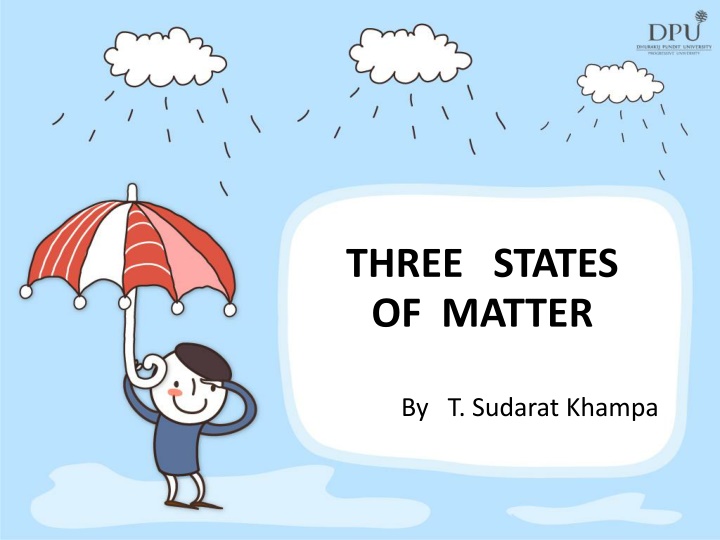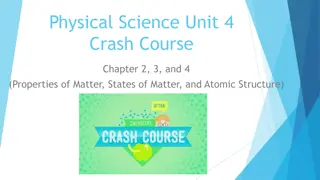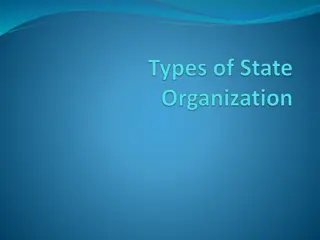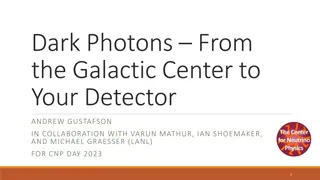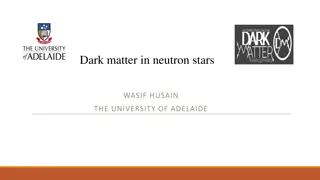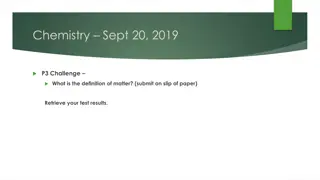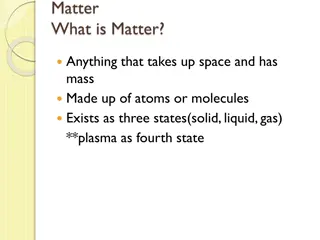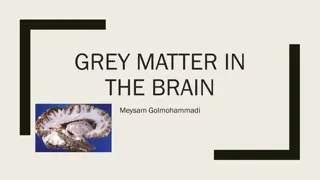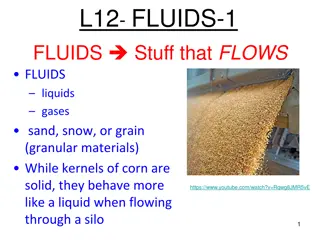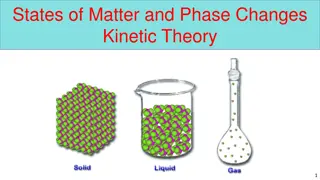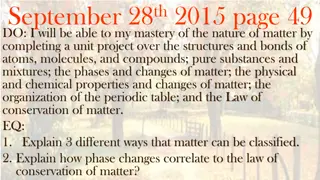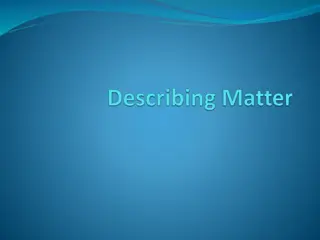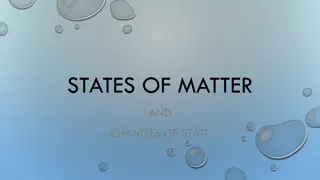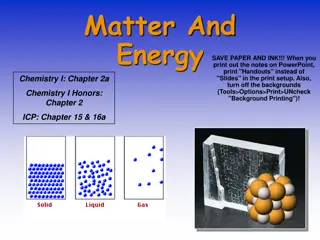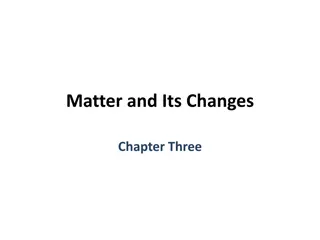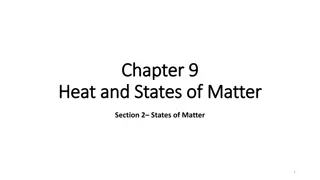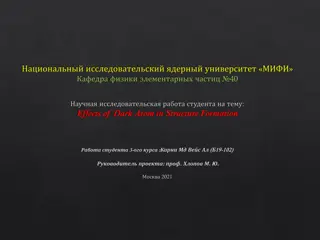THREE STATES OF MATTER
Matter, defined as anything with mass and volume, exists in three states: solids, liquids, and gases. Each state has distinct properties based on particle arrangement, energy, and distance between particles. Solids have a fixed shape and volume with particles in a tight pattern, while liquids take the shape of their container and flow easily. Gases, with no fixed shape or volume, consist of rapidly moving particles with spaces between them. Understanding these states and their characteristics is essential in science and daily life.
Uploaded on Feb 18, 2025 | 0 Views
Download Presentation

Please find below an Image/Link to download the presentation.
The content on the website is provided AS IS for your information and personal use only. It may not be sold, licensed, or shared on other websites without obtaining consent from the author.If you encounter any issues during the download, it is possible that the publisher has removed the file from their server.
You are allowed to download the files provided on this website for personal or commercial use, subject to the condition that they are used lawfully. All files are the property of their respective owners.
The content on the website is provided AS IS for your information and personal use only. It may not be sold, licensed, or shared on other websites without obtaining consent from the author.
E N D
Presentation Transcript
THREE STATES OF MATTER By T. Sudarat Khampa
What is matter? Matter is anything that has mass and takes up space.
Properties of Matter How It Looks (Shiny ,Dull, Color, etc.) How It Feels (Hard, Soft, Rough , Smooth, etc.) How It Smells (Sweet, Sharp, Terrible, No Smell, etc.) How It Sounds (Loud, Soft, Echo, No Sound, etc.) What It Does (Bounce, Stretch, Tear, Break, Magnetism etc.)
STATES OF MATTER Based upon particle arrangement Based upon energy of particles Based upon distance between particles
Kinetic Theory of Matter Matter is made up of particles which are in continual random motion.
STATES OF MATTER SOLIDS Has a fixed shape Has a fixed volume Particles are arranged in a tight, regular pattern Particles move very little
Examples of Solids are Ice Frog Cheese Bricks Wood Popcicle
STATES OF MATTER LIQUID Has no fixed shape Has a fixed volume Particles move past one another easily Particles are fairly close, but not in a neat even arrangement as the particles in a solid are
Examples of Liquid are Orange Juice Water Soft drinks Milk Rubbing Alcohol Vinegar
STATES OF MATTER GAS Has no fixed shape Has no fixed volume Made of particles that move rapidly The particles also have large spaces between them in comparison to solids and liquids
Examples of Gas are Steam Oxygen Carbon dioxide Smog Tear Gas Helium
PHASE CHANGES Description of Phase Change Heat Movement During Phase Change Term for Phase Change Heat goes into the solid as it melts. Solid to liquid Melting Liquid to solid Heat leaves the liquid as it freezes. Freezing
PHASE CHANGES Description of Phase Change Heat Movement During Phase Change Term for Phase Change Heat goes into the liquid as it vaporizes. Liquid to gas boiling and evaporation Heat leaves the gas as it condenses. Gas to liquid Condensation Heat goes into the solid as it sublimates. Solid to gas Sublimation
Quiz 1. What state of matter has a definite shape, a definite volume and cannot flow? SOLID
Quiz 2. This picture, What is physical process change in state of matter. MELTING
Quiz 3. When a gas is compressed it changes state into a .. LIQUID
Quiz 4. . is the change in state of a solid to liquid. MELTING
Quiz 5. What state of matter has a free shape, a definite volume? LIQUID
Quiz 6. This picture, What is physical process change in state of matter. FREEZING
Quiz 7. . is the change in state of a solid to gas. SUBLIMATION
Quiz 8. This picture, What is physical process change in state of matter. EVAPORATION
Quiz 9. What state of matter has a no fixed shape and volume? GAS
Quiz 10. This picture, What is physical process change in state of matter. DEPOSITION
Quiz 11. . is the change in state of a liquid to gas. EVAPORATION
Quiz 12. What state of this particle? SOLID
Quiz 13. . is the change in state of a liquid to solid. FREEZING
Quiz 14. This picture, What is physical process change in state of matter. CONDENSATION
Quiz 15. What state of this particle? GAS
Quiz 16. . is the change in state of a gas to liquid. CONDESATION
Quiz 17. What is a state of matter in this picture? LIQUID
Quiz 18. What state of this particle? LIQUID
Quiz 19. . is the change in state of a gas to solid. DEPOSITION
Quiz 20. What is a state of matter in this picture? SOLID
